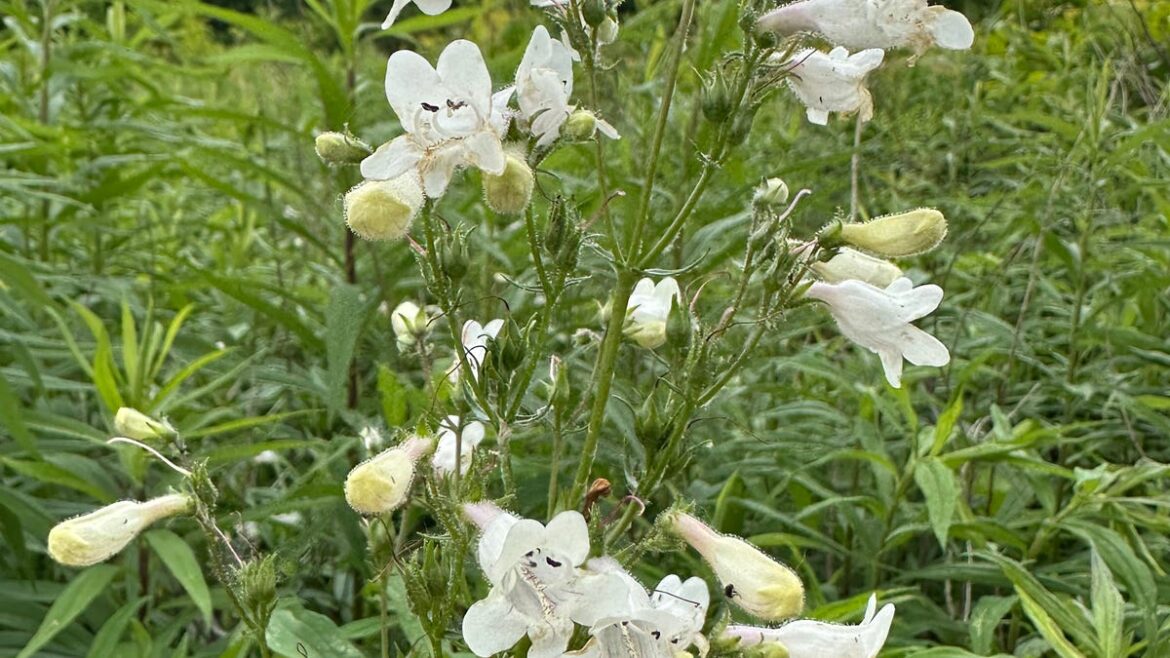Special to The Columbus Dispatch
Want to photograph the wildflower blooms? Here are some photo tips
The wildflower blooms are definitely Instagram worthy. Here are some photo tips from USA TODAY photojournalist Robert Hanashiro to help you make the best pictures possible.
Foxglove beardtongue is a low-maintenance, deer-resistant perennial native to central Ohio.The plant thrives in various conditions and is easily grown from seed.
Editor’s note: Once a month, OSU Extension Master Gardener Volunteers in Franklin County profile a plant that occurs naturally in central Ohio.
Foxglove beardtongue is an easy-to-grow native plant that tolerates deer, rabbits, drought, clay soil and dry soil, making it an excellent choice for central Ohio gardens.
Its late-spring/early summer blooms are attractive as cut flowers — the 1-inch tubular, two-lipped white or purple-tinged flowers resemble snapdragons, and foxgloves have a long blooming period.
The plant grows about 30 inches tall in a clump with upright stems, glossy-stem leaves and basal foliage. Also known as smooth Penstemon, beardtongue, tall-white beardtongue or Penstemon digitalis is happy in well-drained garden soil in full sun to partial shade.
Growing wild in prairies and other open areas, foxglove beardtongue is native from New England to the Mississippi River and south to Louisiana.
It’s not only an attractive and low-maintenance plant, but also an important nectar source at a critical time between spring and summer for adult butterflies, moths and bees.
The white flowers attract sphinx moths in the evening and mason bees and long-tongued bees including honeybees and bumblebees.
The Baltimore checkerspot butterfly and the chalcedony midget moth use it as a host plant to lay their eggs. Hummingbirds are attracted both to its nectar and to the small insects that frequent the flowers.
The flowers have distinctive features that assure that pollination occurs. The hairs that line the lower petal force bees deeper into the flower. There are also distinct lines or nectar guides leading to the back of the flower to lead bees to the nectar.
The plant’s oval seedpods can turn reddish in late summer, dry brown in fall and often hold on into winter. After the seeds are formed, the stalks fall over, helping to distribute the seeds. Birds will eat the seeds. The small seeds can also be spread by the wind.
In the garden, this plant is easy to grow from seed and adapts easily to cultivation. It’s large enough to compete against many weeds. It can spread somewhat aggressively but is relatively short-lived.
The flowers are showy and attract a great diversity of pollinators. It has no serious pest or disease problems. Foxglove beardtongue would be a great addition to a garden.
Growing conditions
Hardiness zones: 3-8
Sun: Full sun to partial shade
Water: Dry to medium
Soil: Average, well-drained; does not tolerate wet soils
Maintenance: Low
Propagation: Root division, seeds, cuttings
Pests and diseases: None serious

